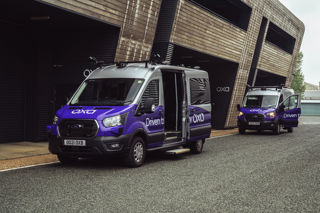A rapid increase in new vehicles with Advanced Driver Assistance Systems (ADAS) featuring cameras brings challenges for the aftermarket in 2016, according to the Automotive Glazing Academy.
Industry estimates put the level of windscreen replacements involving ADAS-equipped cars in 2014 at about 1%, but is predicted to rise to over 40% by 2020, driven partly by EuroNCAP encouraging greater use of camera-reliant safety systems.
Windscreen mounted cameras help to control safety systems including lane departure warning, adaptive cruise control and autonomous emergency braking.
Such is their sensitivity, however, recalibration is essential following any chassis or suspension repairs, wheel alignment, tracking, body repair and windscreen replacement.
Vehicle manufacturers have different stipulations, requiring ADAS cameras to be reset by either a dynamic (in motion) or static recalibration. Failure to reset cameras correctly would render a vehicle’s ADAS inaccurate or even inoperative, which could compromise the safety of the occupants.
AGA, formerly known as the Independent Windscreen Academy, has begun working with industry partners to educate and up-skill the sector on the issue.
According to Maria Charlton, director of AGA, skills training, investment in recalibration equipment, including Camera and Sensor Calibration (CSC) diagnostic tools and consumer marketing are all areas that the aftermarket sector needs to address quickly.
She said: “The sophistication of ADAS has taken smart glass to a whole new level which brings both challenge and opportunity to the whole aftermarket. Businesses need to understand the implications of working on vehicles with cameras and ensure they have the necessary skills base and equipment if they intend to offer recalibration as a safety critical service. It’s paramount that customers are advised of this after certain work is carried out.”
“ADAS windscreens can cost insurance companies thousands to replace so we expect to see a significant rise in the windscreen excess during the next couple of years, as more replacements filter through. Alternatively, we may see insurers scrap the excess altogether, in favour of adding glass cover to the main policy.”
The Department for Business, Innovation and Skills approved a joint bid from vehicle glazing employers in September to develop a new apprenticeship standard for the next generation of automotive glazing technicians, which will encompass ADAS and other vehicle technologies.
The automotive glazing trailblazer group consists of ten employers representing almost 90% of the UK’s vehicle glazing workforce.




















Topclasswindscreens - 23/12/2015 09:10
I have read your article. This article is really excellent in regard to Windscreen Replacement. Thank you for uploading.